What’s the Deal with Running Underwear, and Does Such a Thing Actually Work?
Here, there, [r]underwear.
Few body parts are more susceptible, and sensitive, to cold, and chafing, than your groin. After all, there’s a lot that goes on down there.
Runners typically fall into two camps. The first are runners who go no base layer, or commando. The second are runners who consider a base layer mandatory. But, did you know that most running-specific shorts have a build-it liner that acts as runderwear? Don’t be surprised if you talk to fellow runners and find out they go full-commando most of the time; an additional underlayer just isn’t necessary, and is often uncomfortable with the inner-liner.
Not all shorts have a built-in liner, and runderwear becomes particularly relevant in the winter, when you want a thin yet warm base layer to keep your groin and legs warm, and protected from the wind and elements. Runderwear can also be beneficial in the summer, adding an additional medium between your shorts and legs.
Although most major outdoor sports brands make underwear, most aren’t necessarily running-specific. Essentially runderwear qualifies as featuring moisture-wicking, tighter-fitting and stretchable under garments for activewear. Most come in boxer brief form for men, and briefs for women, with varying amounts of coverage for specific conditions and temperatures.
So yes, runderwear does exist. They work, and they’re important. Below, we’ve rounded up select underwear products from leading brands to give you a sense of what’s out there.
MEC T2 Wind Boxers – $29.99
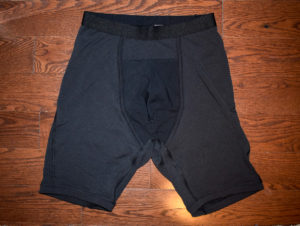
Best for: cold, windy conditions.
The MEC T2 Wind Boxers offer the thermal protection you need for a Canadian winter.
The extra-long fit (to just above your knee) is great to keep you warm and the panel covering the groin is tougher nylon to protect your legs from the wind and cold. Fortunately, the boxer is light enough to slip under a pair of tights or pants, but the T2 is strictly for colder weather, and would be too warm and unnecessary in milder conditions.
What the T2 Wind Boxers had above all else was additional groin protection from the wind and elements, making it the number one choice among the products tested for a base layer.
lululemon Always In Motion Boxer ($28) & License To Train Boxer $34

Best for: milder, calmer conditions.
It’s not surprising that the folks that made activewear across the country and North America cool make awesome base layers.
With the new Always in Motion Boxer and License to Train Boxer, both are fantastic hybrid products for both running and for a runner’s active lifestyle during time when they aren’t in their running shoes.
Instead of going the low-cut route, lululemon’s two products for this review featured a 7” inseam for milder conditions. This line of underwear is ideal for those who wear longer shorts in the summer, or for those who prefer to wear a base layer under their shorts to the gym. The main difference is the License To Train Boxer is meant for performance while the Always In Motion Boxer is designed for everyday lifestyle.
As an added bonus, and it just shows the lengths that lululemon goes to, the product comes in a reusable bag, perfect for a toiletry bag, or a to-go bag to enclose your headphones, wallet, credit cards and any other hand held items you may have on you.
Running Room Wind Front Boxers – $49.99
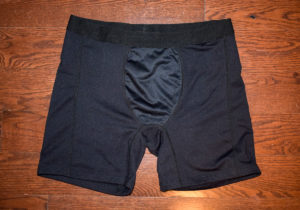
Best for: cold, windy conditions.
I have to admit that I had reservations about Running Room’s underwear given the fact that I don’t have a whole lot of the Canadian brand’s products in my current running attire lineup. However, I was immediately impressed by the feel, fit and cut of the Running Room Wind Front Boxers. This specific line is made for conditions colder than -5 C, and was tested in temperatures as low as -20 C. The boxers are on the lengthier side, with a 6” inseam, covering the groin area as well as to about halfway down the thighs, leaving just the top of the knee exposed.
The inner is super soft with an additional panel across the front for added protection against the toughest conditions. The Wind Front Boxers perform particularly well on days with deceivingly cold wind chill, and can be used all winter long, including during the coldest months. And note: for the dudes out there, boxers with wind protection is a much better alternative than a sock. (Yes, that’s a thing.)
The Wind Front Boxers are the most expensive of the products tested, retailing for $49.99.
Under Armour ArmourVent Boxerjock- $35
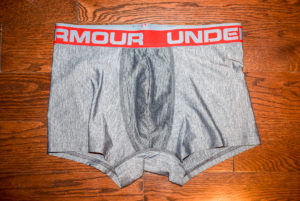
Best for: milder, windy conditions and cooler, calm conditions.
The Under Armour runderwear is the softest and comfiest of any products tested for this review. The Under Armour ArmourVent Boxerjock, which comes as short as a 3” inseam, is ideal for milder temperatures, and are versatile enough for colder conditions with more favourable winds, as there’s no additional protection against the wind, like runderwear from MEC and the Running Room.
The advantage to having a shorter cut is that it best mimics going full-commando, the preferred choice of many runners when it comes to bottom attire. The minimalist feel doesn’t add any extra material across the front of your thighs, and keeps warm the most susceptible anatomy. The shorter cut also bodes well for minimizing chafing as there’s no coverage between the knee and the top of the thigh.
This is by no means an exhaustive list. In fact, almost every sportswear brand out there—from Nike to Smartwool—offers some sort of base layer, whether they classify it as underwear or some sort of compression short alternative.
So, whether it’s for protection against chafing, to stay warm in the winter, or simply to have a comfortable pair of under garments, your legs will thank you for owning runderwear.




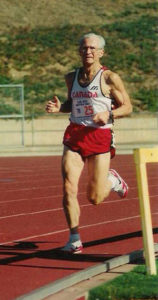






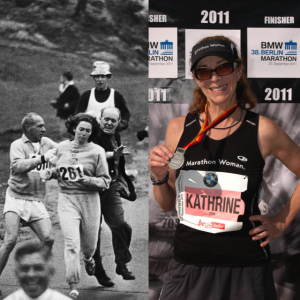

 Our Magazine
Our Magazine
